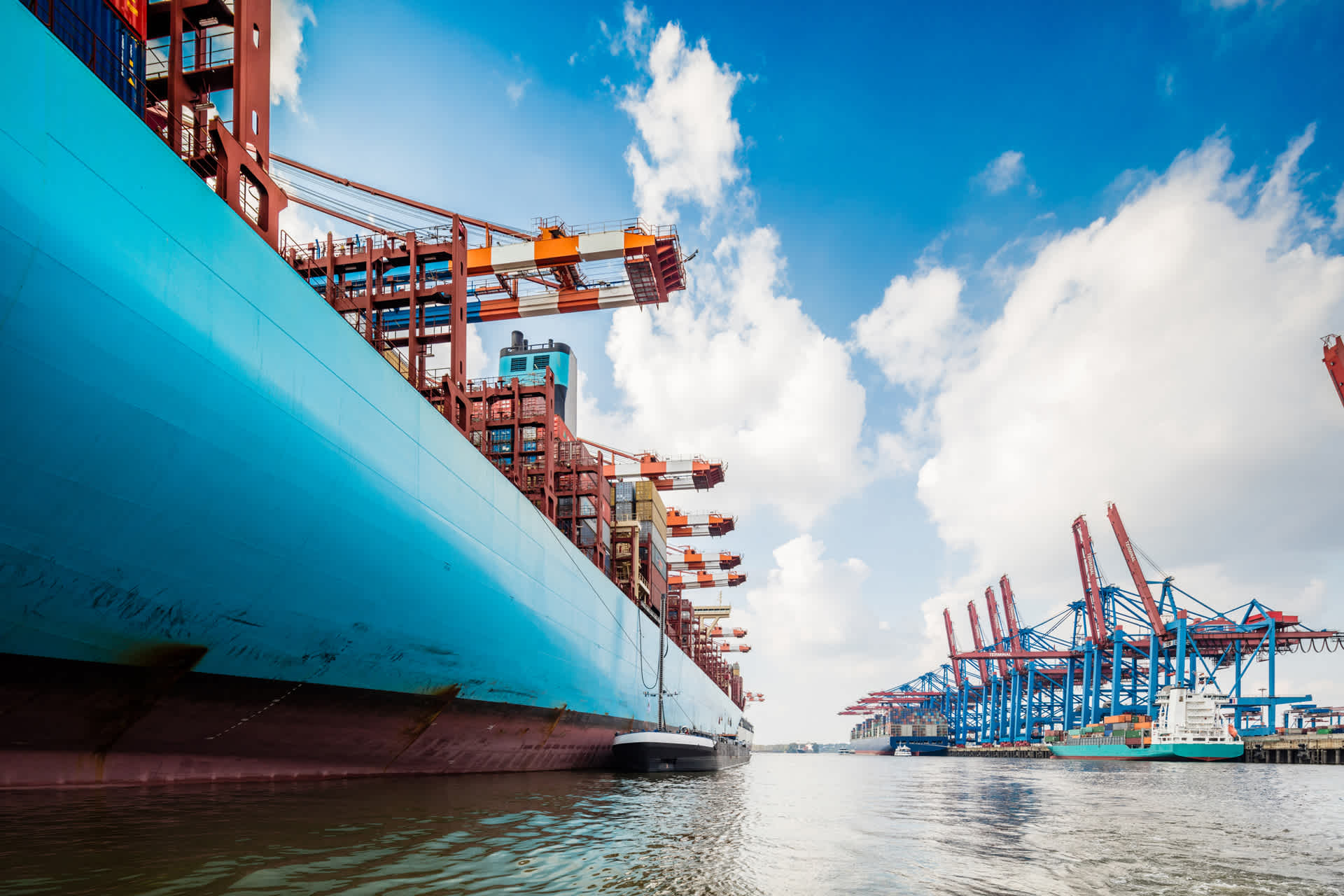Global Logistics Update
Freight Market Update: September 14, 2021
Ocean and air freight rates and trends; customs and trade industry news plus Covid-19 impacts for the week of September 14, 2021.
Freight Market Update: September 14, 2021
Logistics Rewired: Preparing for the 2022 Harmonized Schedule Update Sept. 15 at 9:00 am PT | 12:00 pm ET A new Harmonized Tariff Schedule takes effect on January 1, 2022. It could impact your HTS codes, duty rates, FTA eligibility, and more. Learn what could change for you and how to master the transition.
Ocean Freight Market Update
Asia → North America (TPEB)
- Some carriers have announced a pause in rate increases, but clear details as to how such a stance would be implemented in the market remain to be seen. Shippers and importers have paid all-time high premium prices for months in order to get urgent cargo in-transit as soon as possible. Labor strains, extreme congestion, and Covid-19 related disruptions are expected to continue to place additional pressure on capacity in coming months.
- Rates September 15 GRI implemented by some carriers.
- Space Critical
- Capacity/Equipment Critical/Severe Undercapacity
- Recommendation Continue to book well in advance (at least 4 to 6 weeks) prior to CRD for best chance of hitting it. Encourage suppliers to support departures from different origin ports. Consider terminating cargo at destination coastal ports to prevent intermodal delays.
Asia → Europe (FEWB)
- Space and equipment crunches continue. Market demand exceeds supply as rates have skyrocketed.There is some talk by carriers about stopping spot rate increases, but it is not yet clear how this will play out. The situation is worsened by blank sailings and poor equipment availability. Carriers are overcommitted and are limiting booking acceptance or rolling shipments. With continuous vessel delays and shiftings, schedule reliability remains very low.
- Rates Rates remain at a record high level but are stable going into September. Rates may increase further due upcoming Golden Week blank sailings.
- Space Extremely critical space situation
- Capacity/Equipment Severe equipment shortage across all Asia origins.
- Recommendation Book at least 4 to 5 weeks prior to CRD. Consider premium options, which may be limited. Be flexible in regard to equipment.
Europe → North America (TAWB)
- Terminal congestion along the US East Coast is creating a cascade of delays in vessel schedules. Congestion at LAX/LGB ports has worsened with over 40 vessels in queue, with no expectation to improve in the near term.
- Rates October 1st GRI likely implemented
- Space Critical
- Capacity/Equipment Capacity remains tight for both North Europe and Mediterranean services. Better equipment availability at Port, shortages remain at inland depots.
- Recommendation Book 5 or more weeks prior to CRD. Request premium service for higher reliability and no-roll guarantees.
India → North America
- Equipment shortages with no end in sight continue to affect the Indian Subcontinent market. Record high carrier unreliability causing global congestion
- Rates Increased
- Space remains a challenge as ports of loading omissions are being used as a lever to improve global schedule reliability. Covid outbreaks at key transhipment ports such as Colombo are also causing challenges.
- Equipment of all types are in deficit. Carriers are working to reposition empties while also placing large orders of new equipment.
- Recommendation Use premiums on urgent shipments and shipments with CRD approaching. If routing to USWC, consider rerouting to USEC and transload to truck
North America → Asia
- Space continues to be tight for USWC POLs. USEC capacity has been more readily available; however, as port congestion continues to increase, there is concern of void sailings occurring due to extensive schedule delays.
- Rates Select carriers have implemented GRI’s for Sept 15 and Oct 1 for dry and reefer cargoes.
- Equipment Deficits on containers and chassis are still plaguing IPI origins. Availability for standard equipment at ports has not been an issue, but any special equipment is hard to come by.
- Recommendation Please place bookings 4 to 6 weeks in advance to secure your ideal sailing.
North America → Europe
- There is available capacity on the TAEB trade with carriers looking for cargo from the US East and Gulf Coasts. US West Coast service to Europe is very tight.
- Rates remain steady for September into October.
- Equipment Deficits are still plaguing IPI origins. Availability for standard equipment at ports has not been an issue, but any special equipment is hard to come by.
- Please place bookings 3 to 4 weeks in advance for East Coast/Gulf sailings and 4 to 6 weeks for Pacific Coast sailings.
Air Freight Market Update
Asia
- Shanghai / PVG: PVG airport is still operational at a lower capacity. Additionally, Typhoon Chanthu has pushed airlines to cancel more flights than the previous week. As a result, rates have increased for TPEB and transit times are expected to extend by 5 to 7 days. For FEWB, rates continue to climb and may continue into next week.
- Hong Kong: The market demand remains strong through Q3 and extended transit times are expected. More ocean to air conversions are also contributing to higher rates. Due to the typhoon impact in North East China this week, capacity has become more unstable as some flights could not depart from PVG. Some carriers have increased rates on the FEWB lane going into Q4. The market is tight and will continue through China’s National Day Holiday in October as shippers rush to push out cargo.
- Taiwan: TPEB market capacity is fully booked with many direct flights only available after week 38. Space may still be available for high density loose cartons. As per airlines’ feedback, there shall not be further rate announcements in September, however they will have to re-evaluate come October. For FEWB, airlines announced another rate increase of 15% to 20% effective from Sept 16. Space is also tightening and origin dwell is estimated at 3 to 5 days.
- Vietnam: Almost all the factories in northern Vietnam are running at full speed to address backlogged orders from Q3, so demand is increasing significantly and rates are going up on a daily basis. Space is only available for Express or Premium Express rates. EU rates have also reached a 3-month all time high. Several carriers have announced cancellations for the week while others are booked through the Mid-Autumn Festival holiday. For southern Vietnam, rates are very high due to more TPEB ocean to air conversions as there is no ocean space available that can make it in time for the US Holiday season. Several carriers have also reduced TPEB flight frequency. FEWB demand and rates remain stable since factories are still short of manpower.
Europe
- Week on week, TAWB trade remains steady. No significant increase in demand noted from EU hubs. Rates increased slightly to the East & West Coast, also US Central hubs. Because demand has not seen a shock/increase, PAX capacity decrease could account for the small rate squeeze. Airlines that are adaptable will move “cargo-only” PAX flights as contingency, therefore stability should remain until the end of September.
- European carriers still offer services from Asia to the US East Coast via European hubs (AMS/FRA/CDG), substituting for the heavy demand on the Transpacific. This is starting to put some pressure however on the FEWB lane.
- Far East eastbound cargo is still disrupted, airlines have reduced capacity on this lane, and bookings are likely to be changed at very short notice. Additionally, the typhoon hitting close to PVG has halted some airlines offering PVG import flights. Secondary airports to PVG are still seeing delays.
- US ground handling delays are still 2 days on average. Lead time and secondary airport hubs could help combat this issue that has been persisting since August.
- Advice continues for all trade lanes ex EU: Place bookings at least 7 days ahead of CRD for most optimal rates and routing solutions.
Americas
- Export demand from the US remains steady and stable, while US air exports are experiencing some manageable capacity constraints. Large shipments from all major outbound gateways in the US can take 2 to 4 days from booking to uplift into key European and Asian destinations.
- Operations at the PVG airport remain at low throughput capacity due to additional COVID-19 cases. Over 30% of flights have been cancelled. The current situation generates additional capacity constraints in other Asian hubs (HKG/ICN/TPE/NRT). Rates are increasing.
- Capacity to Australia is limited. Several carriers have reduced their weekly flights due to the country’s cap on passenger numbers.
- Capacity to Central Europe (AMS/CDG/FRA) is constrained but manageable.
- Space to India is manageable, but Nepal, Bangladesh, and Indonesia remain very constrained as aid and relief efforts into the Covid-struck region continue.
- LAX/ORD/JFK ground-handlers are facing large backlogs and are using off-airport facilities to manage the flood of inbound cargo, which has a trickle down effect for the throughput on the export side. Coupled with a 100% screening requirement for all US export airfreight, ground-handlers are still reporting long lines for cargo throughput. Many have implemented new, earlier close outs for exports to accommodate the additional time.
Trucking Market Update
UK
- Overall, driver availability in the UK is critical with retailers forecasting winter holiday issues already.
- Rates continue to rise as capacity drops.
- Recommendation Book well in advance. Communicate the need for flexibility with warehousing.
Updates from Flexport's Customs & Compliance Team
New Details of the Biden Administration’s China Trade Policy Emerge
Reports indicate the Biden Administration is carefully considering expanding the current China trade policy to include an investigation into the Chinese government’s use of industrial subsidies. A result of an investigation could include additional tariffs under Section 301 of the Trade Act of 1974. Additionally, it appears the US Trade Representative plans to maintain most of the current Section 301 tariffs, but will ascertain which tariffs are hitting US business and consumers the hardest.
ICYMI: CBP raises COBRA User Fees on October 1
CBP announced they are increasing Consolidated Omnibus Budget Reconciliation Act of 1985 (COBRA) fees in Fiscal Year 2022 by 11.009% to adjust for inflation, to take effect on October 1, 2021. The COBRA fees include the merchandise processing fee, informal entry fee, surcharge for manual entry and release, and the dutiable mail fee. A full list of fees is available here.
Factory Output News
Europe Europe’s economy is roaring back from the Covid crisis. [Source]
Vietnam Covid restrictions extended from Sept 6 to Sept 20 in Hanoi. [Source]
Cambodia China’s foreign minister visits Cambodia for trade and virus discussions. [Source]
Thailand Bangkok will be reopening without quarantine for vaccinated tourists in October. [Source]
Philippines Typhoon Chanthu hits northernmost Philippine islands, causing floods and cutting power. [Source]
India UAE lifts ban on passengers from India. Passengers from India can expect to fly into the UAE starting Sept 12. [Source]
India Ford is the next automotive company to exit India after General Motors and Harley Davidson. Two plants in Chennai and Sanand will shut down by Q2 2022. [Source]
Sri Lanka Sri Lanka has approved a state of emergency due to the shortage of some staples and is stepping up efforts to control food prices and prevent stockpiling. [Source]
Freight Market News
Top Carriers Freeze Spot Rates CMA CGM and Hapag-Lloyd have pledged not to increase any further rates for the next few months according to Lloyd’s Loading List. This also applies to all services under CMA CGM including CNC, Containerships, ANL, APL, and Mercosul.
Read More: FlexU: Learn to Work Your Supply Chain for All It’s Worth
Operations Resume in China After Typhoon After briefly shutting down for Typhoon Chanthu, terminals at both Shanghai and Ningbo began operations on Tuesday according to South China Morning Post. Flights and rail services also started to return in Shanghai as the storm was downgraded.
Read More: A Field Guide to Southeast Asia Supply Chain Options
Houston Terminals Shutter for Storm Nicholas made landfall early Tuesday, threatening high winds, torrential rain, and flooding, according to CNN. Since landfall, Nicholas has weakened to a tropical storm, but FreightWaves reports Port of Houston container terminals remain closed.
Economic highlights from Flexport Chief Economist Dr. Phil Levy
The European Central Bank has modestly increased its HICP inflation projection to 1.7% in 2022 from 1.5% previously. That’s still well below the bank’s 2% target rate. As a result ECB President Lagarde declared that a recalibration of policy, not full tapering, is needed. Inflationary pressures remain, with commodity and food price rises continuing, while industrial inventories are close to the 40 year lows set in June in the latest Eurostat survey.
China’s export growth accelerated in August to 25.6% year-on-year from 19.4% in July, beating estimates of 17.1%. A slower growth rate was expected due to the spread of Delta and port closures. Yet, exports of semiconductors and LCD panels accelerated to 38.9% and 39.8% respectively to reach record levels in the constrained electronic components sector. The rate of growth in furniture and toys also increased, perhaps indicating earlier seasonal shipping.
The US and Mexico have held their first “High-Level Economic Dialogue” since 2016. The focus was labor training and SME support, though there did not appear to be new policy measures. In the short term, disagreements over the USMCA’s rules on automotive rules of origin may cloud rather than improve relations.
Freight Market Update is a free service from Flexport, the modern freight forwarder. If you're not already a subscriber, we invite you to subscribe here.
Please note that the information in our publications is compiled from a variety of sources based on the information we have to date. This information is provided to our community for informational purposes only, and we do not accept any liability or responsibility for reliance on the information contained herein.


